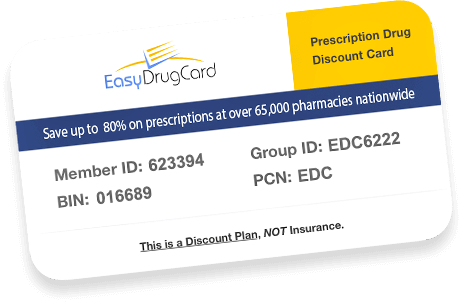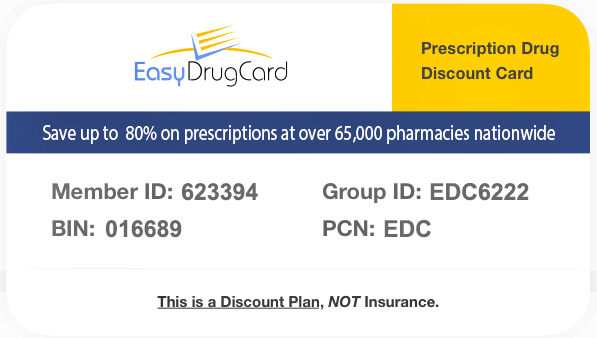Ativan (lorazepam) and Xanax (alprazolam) are prescription medications used to treat anxiety. They belong to a class of drugs called benzodiazepines, or benzos for short. There are more than a dozen benzos available by prescription, and both Ativan and Xanax are available as brand and generic medications.
All benzodiazepines are classified as Schedule IV substances by the DEA, which means they carry a low potential for abuse and low risk of dependence when compared to other controlled substances such as opioids.
Benzos work very well for the treatment of anxiety, but because of the risks for abuse and addiction, long term use is generally not recommended. They are often prescribed in addition to other anxiety medications, like antidepressants, Buspar, or Lyrica.
But how do they work?
All benzodiazepines have the same basic chemical structure, and they all work by increasing the activity of GABA receptors in your brain. GABA is a neurotransmitter, or chemical messenger, that affects memory, mood, and pain. By increasing the activity of GABA, benzos slow down your brain and nervous system; this causes a calming and sedating effect.
What other conditions do they treat?
Ativan and Xanax are both approved by the FDA to manage anxiety disorders and their symptoms. Xanax is also approved to treat panic disorders, while Ativan has been approved to treat a prolonged seizure called status epilepticus. They are both used off label (which means not approved by the FDA) to treat a variety of other conditions, including sedation of agitated patients, delirium, insomnia, premenstrual syndrome, alcohol and opioid withdrawal, nausea and vomiting caused by chemotherapy, and serotonin syndrome.
What are the main differences?
Xanax is approved for use in adults and children 7 years of age and older, while Ativan can be used in infants, children, and adults depending on what is being treated. Ativan is available as an oral concentrate, injectable solution, and oral tablet. Xanax can be found as an oral concentrate and oral or disintegrating tablet; it is also available in an extended-release formulation. Both Xanax and Ativan begin working very quickly, usually within one hour of oral administration. One dose of Xanax can keep working in your body for about 5 hours, while one dose of Ativan may last for 8 hours. Extended-release Xanax can last up to 12 hours.
Which is more effective?
Studies have shown that both Ativan and Xanax work very well for treating anxiety; one medication has not been shown to be more effective than another. Only your doctor can help decide which medication is best for you, and it may require some trial and error before the correct medicine and dosing is found.
How much do they cost?
Generic formulations of both medications are covered by most Medicare and commercial insurance plans; brand names are often not covered or may have a high copay. If you are having trouble paying for medications, Easy Drug Card may be able to provide medication discounts at one of the 65,000+ participating nationwide and local neighborhood pharmacies.
What are some common side effects?
Because Ativan and Xanax are such similar medications, their side effect profiles are almost identical. The most common side effects include drowsiness, dizziness, and weakness. At higher doses, more serious side effects may be seen; these can include loss of balance, memory impairment, irritability, increased appetite, sexual side effects such as decreased libido, and depression. Older people are more sensitive to these side effects.
Extended use can also lead to tolerance, meaning you may feel like you need to take more and more medication to function normally.
When starting a benzodiazepine, the dose should always be increased slowly and never discontinued suddenly if you have taken it for an extended period of time. These medications should be tapered off slowly under the guidance of a medical professional to prevent withdrawal symptoms such as agitation, increased heart rate and blood pressure, insomnia, tremors, and seizures.
What else should I know?
Both Ativan and Xanax come with a boxed warning, which is a required warning by the FDA for certain medications that carry serious safety risks. They should never be used in combination with opioid painkillers due to the risk of extreme sedation, severe respiratory depression, coma, or even death. If the combination cannot be avoided, patients should take the lowest dose possible for the shortest period of time under close monitoring by a medical professional.
Ativan and Xanax have many significant interactions with other medications and substances that can result in serious and life-threatening side effects. You should never combine benzodiazepines with alcohol because of this risk.
Ativan and Xanax can cause physical and psychological dependence. The risk for this dependence increases with higher doses, longer use, or with a history of drug or alcohol abuse. These medications should never be taken without careful medical evaluation and a prescription from your doctor. They should be taken exactly as prescribed.
Ativan and Xanax, like all benzodiazepines, are not safe to take during pregnancy. There are conflicting studies for use in breastfeeding women; use is not recommended by the manufacturer.
Both medications are also on the Beers’ List, which is a list of medications that may be inappropriate and unsafe for use in older adults. Because older people are more sensitive to the side effects caused by Ativan and Xanax, there is a greater risk for cognitive impairment, delirium, falls, fractures, and accidents if they take these medications.
References:
- Bostwick JR, Gardner KN. Anxiety disorders. In: Zeind CS, Carvalho MG, editors. Applied Therapeutics: The Clinical Use of Drugs. 11th ed. Philadelphia, PA: Wolters Kluwer Health, 2018: 1731-61.
- Clinical Resource, Appropriate Use of Oral Benzodiazepines. Pharmacist’s Letter/Prescriber’s Letter. December 2020.
- Marion, DW. Ativan. In: UpToDate, Post, TW (Ed), UpToDate, Waltham, MA, 2021.
Marion, DW. Xanax. In: UpToDate, Post, TW (Ed), UpToDate, Waltham, MA, 2021.











